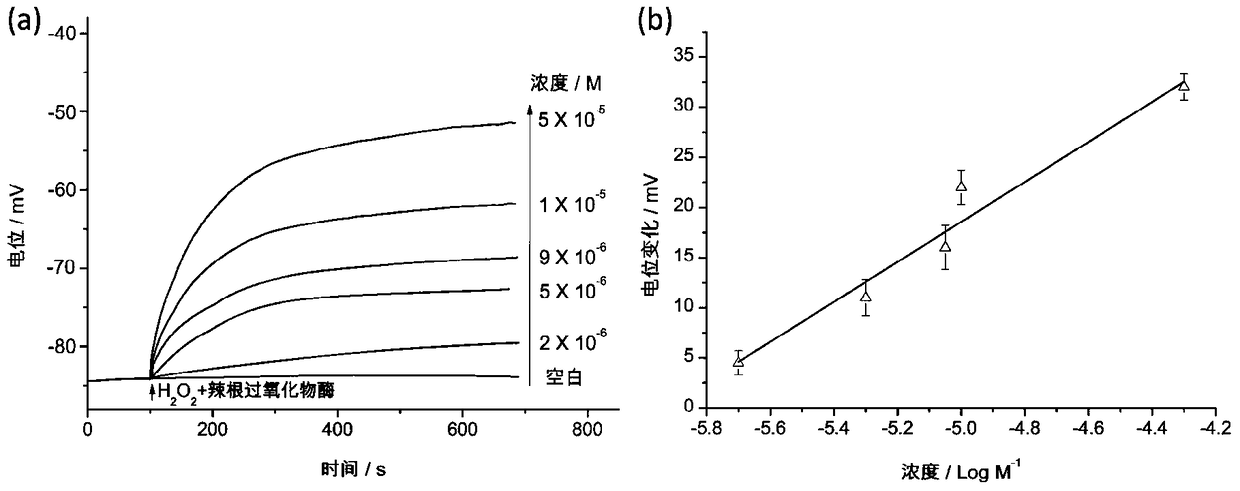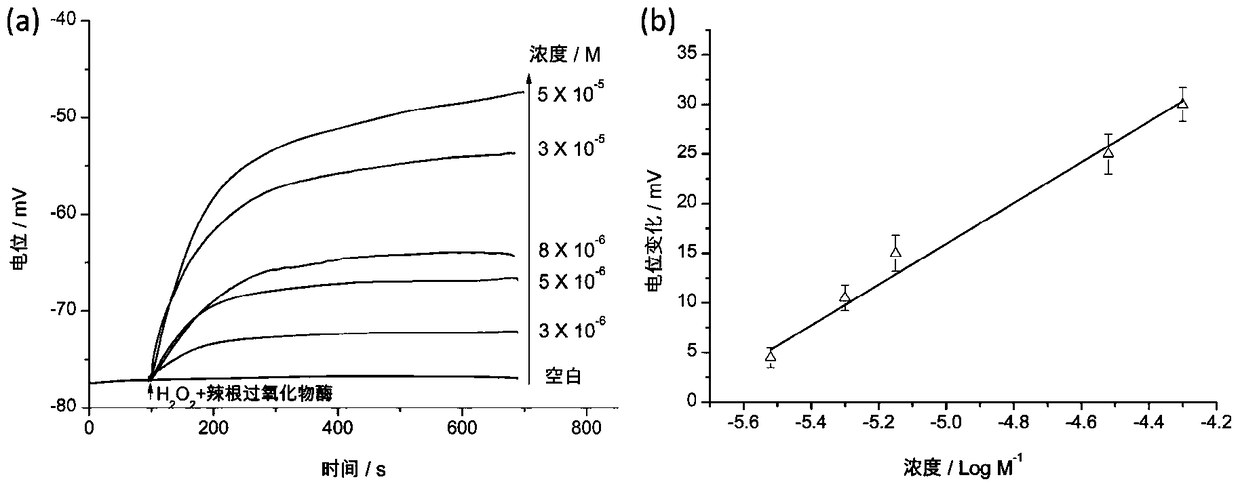A potentiometric sensor of phosphate ion and its application
A phosphate ion and potential-type technology, which is applied in the field of analysis and testing, can solve problems such as the difficulty in detecting the potential of phosphate ions, and achieve the effects of easy miniaturization, low cost, and simple production
- Summary
- Abstract
- Description
- Claims
- Application Information
AI Technical Summary
Problems solved by technology
Method used
Image
Examples
Embodiment 1
[0024] Take Cu 2+ -BPMP is an example for the detection of phosphate ion as a molecular recognition body. The operation steps are as follows:
[0025] (1) Preparation of polymer membrane electrodes
[0026] Weigh 196mg of polyvinyl chloride, 196mg of o-nitrophenyloctyl ether, and 4.0mg of tridodecylmonomethylammonium chloride, dissolve them in 3.0mL of tetrahydrofuran, stir them evenly, and pour them into a glass plate with an inner diameter of 3.5cm in the glass ring. After the tetrahydrofuran was volatilized, the membrane was cut into small discs with an inner diameter of 3 mm using a puncher and pasted on the tip of a pipette with a PVC tube at the bottom. Use HEPES solution (containing 10 mM NaCl) with pH = 7.0 as the inner filling solution and activation solution to activate the electrode, ready for use.
[0027] (2) Assembly of molecular recognition body and indicator molecule
[0028] Use 20mM HEPES buffer solution to prepare 200μM copper perchlorate solution and 1...
Embodiment 2
[0036] With Zn 2+ -BPMP is an example for the detection of phosphate ion as a molecular recognition body. The operation steps are as follows:
[0037] (1) Preparation of polymer membrane electrodes
[0038] Weigh 196mg of polyvinyl chloride, 196mg of o-nitrophenyloctyl ether, and 4.0mg of tridodecylmonomethylammonium chloride, dissolve them in 3.0mL of tetrahydrofuran, stir them evenly, and pour them into a glass plate with an inner diameter of 3.5cm in the glass ring. After the tetrahydrofuran was volatilized, the membrane was cut into small discs with an inner diameter of 3 mm using a puncher and pasted on the tip of a pipette with a PVC tube at the bottom. Use HEPES solution (containing 10 mM NaCl) with pH = 7.0 as the inner filling solution and activation solution to activate the electrode, ready for use.
[0039] (2) Assembly of molecular recognition body and indicator molecule
[0040] Use 20mM HEPES buffer solution to prepare 200μM zinc perchlorate solution and 100...
PUM
 Login to View More
Login to View More Abstract
Description
Claims
Application Information
 Login to View More
Login to View More - R&D
- Intellectual Property
- Life Sciences
- Materials
- Tech Scout
- Unparalleled Data Quality
- Higher Quality Content
- 60% Fewer Hallucinations
Browse by: Latest US Patents, China's latest patents, Technical Efficacy Thesaurus, Application Domain, Technology Topic, Popular Technical Reports.
© 2025 PatSnap. All rights reserved.Legal|Privacy policy|Modern Slavery Act Transparency Statement|Sitemap|About US| Contact US: help@patsnap.com



